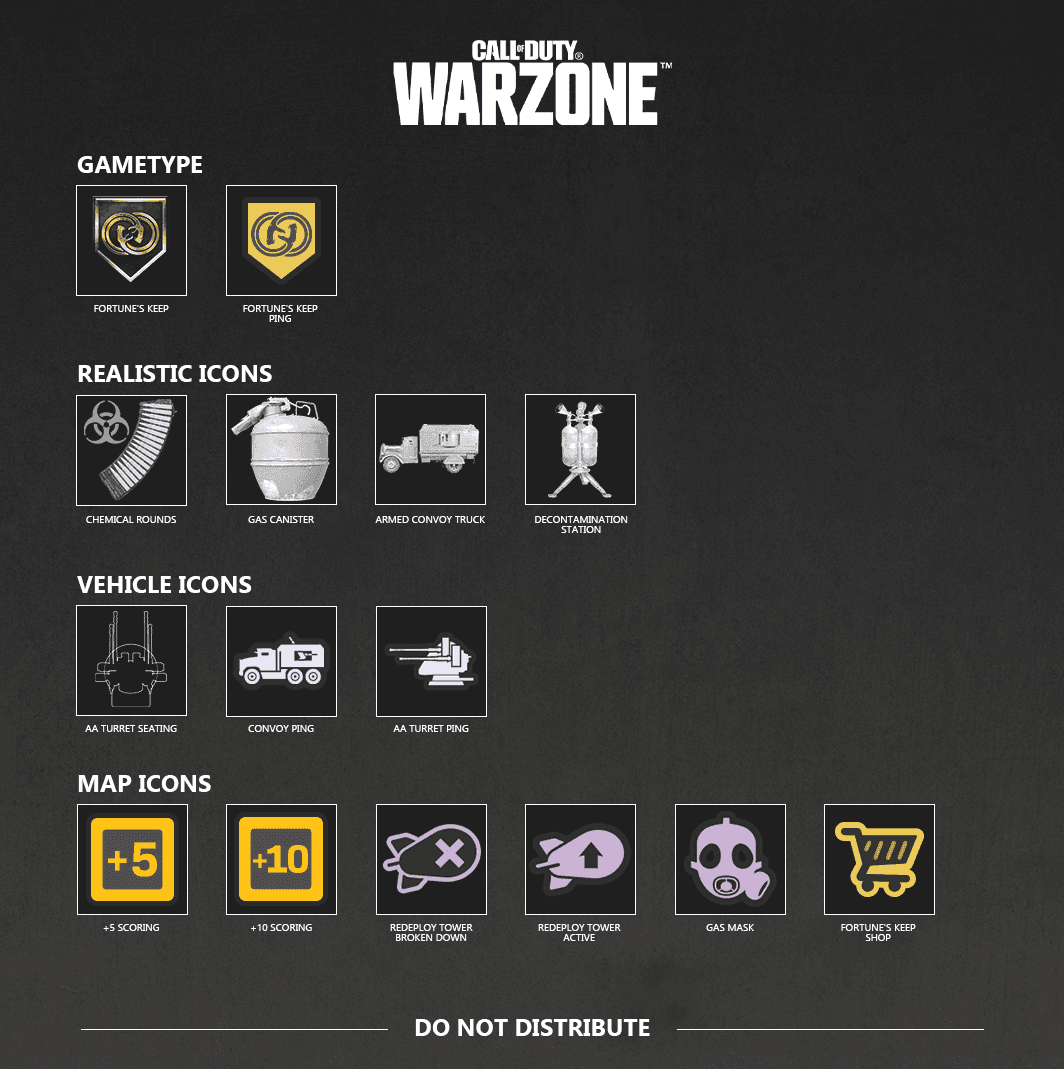
Call of Duty Warzone
Call of Duty: Warzone is an online multiplayer battle royale video game featuring tons of unique game modes, playable character skins, and battle maps. My role as a UI/UX Designer is to build upon the established framework and build out new and engaging UI for the new game mechanics we are bringing to the table.
I created content in a consistent style with pre-established iconography, established the UI pipeline for creating all the content needed for new vehicles in game, worked directly with UI Leads at Raven Software for quick feedback and iteration, and programmed logic in LUA for unique widget elements that incorporated game driven data to alter UI states dynamically.
Accomplishments

3D Model -> Icons Pipeline
Working alongside the talented concept artists and modelers, it’s important that the realistic iconography comes directly from the model itself. Because of this, we take the model and set it up to be exactly viewed from the side to get a clean shot. Once we have the shot, it’s time to style. We have a specific styling we use, but depending on the model material, there’s tweaks that need to be made to improve readability and consistency. From the realistic icon, we take the primary details and reduce them down to a more quickly readable icon that can be registered quickly at a smaller scale for pinging.
Icons
Over the course of development, there is a constant need for new icons as we develop the newest mechanics for warzone. These icons vary in complexity from simple two dimensional to complex mechanisms.
Since we have such a wide variety of icons that exist in the game space, it’s important to make sure that new icons fit into the same visual style as existing iconography, follow color schemes, and are quickly recognizable.
We are not re-inventing the wheel, but rather maintaining and enhancing the wheel as much as possible.

Coming into such a well established franchise comes with waves of knowledge that you absorb very swiftly. In my time working on Warzone, I’ve learned a tremendous amount of what goes into making such a huge experience.
I was taught more about coding and how to think logically using LUA to make my UI come to life. It’s been a very new experience coming from more of a visual background, but I was quickly able to handle these technical issues on my own.
In a studio as big as Activision I found documentation to be incredibly important. I was able to create Confluence pages that helped make dev as accessible and thorough as possible for those down the line in the company. All-in-all, I’ve grown as an artist not only in ability but in terms of organization and technical prowess.
